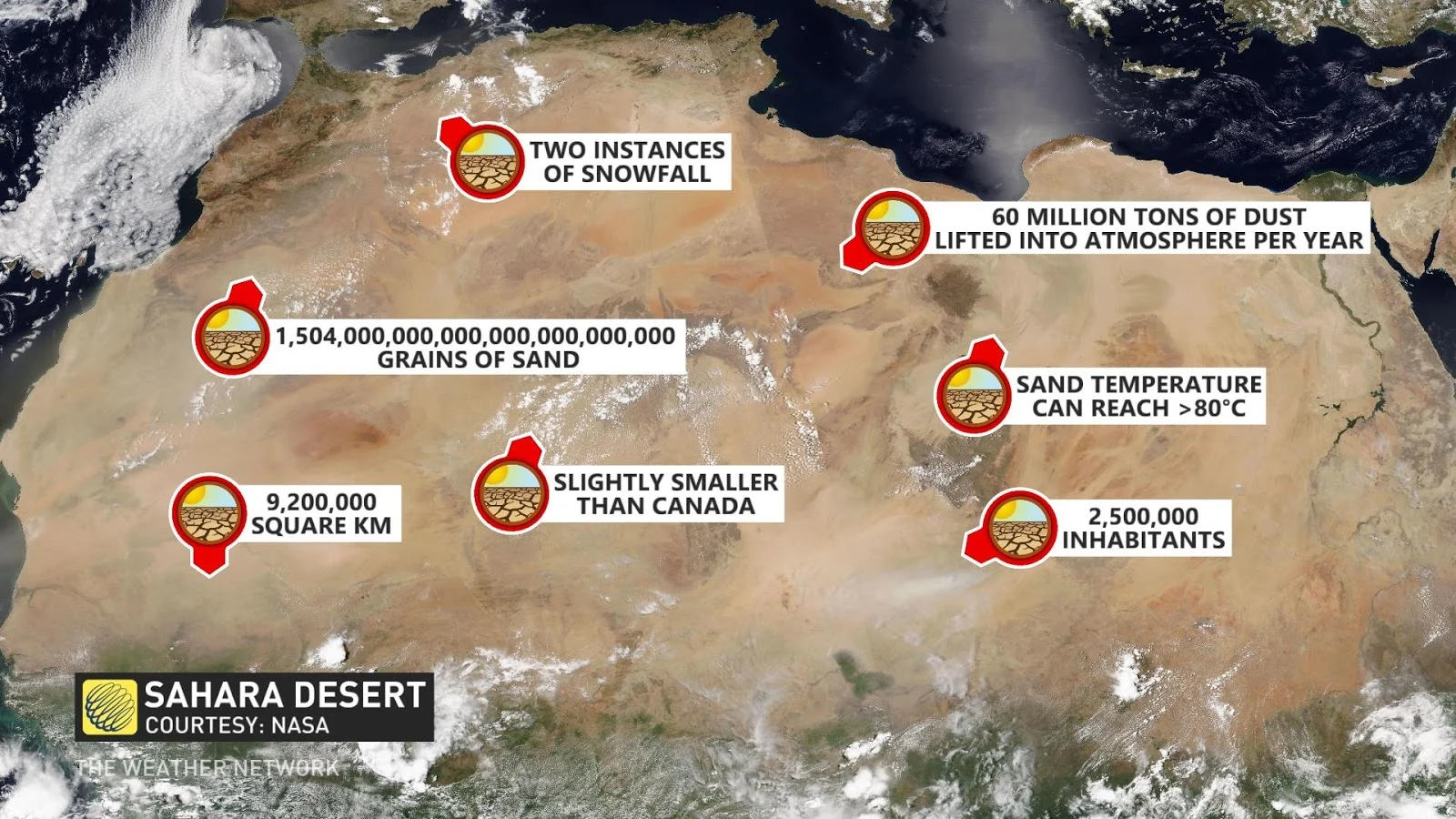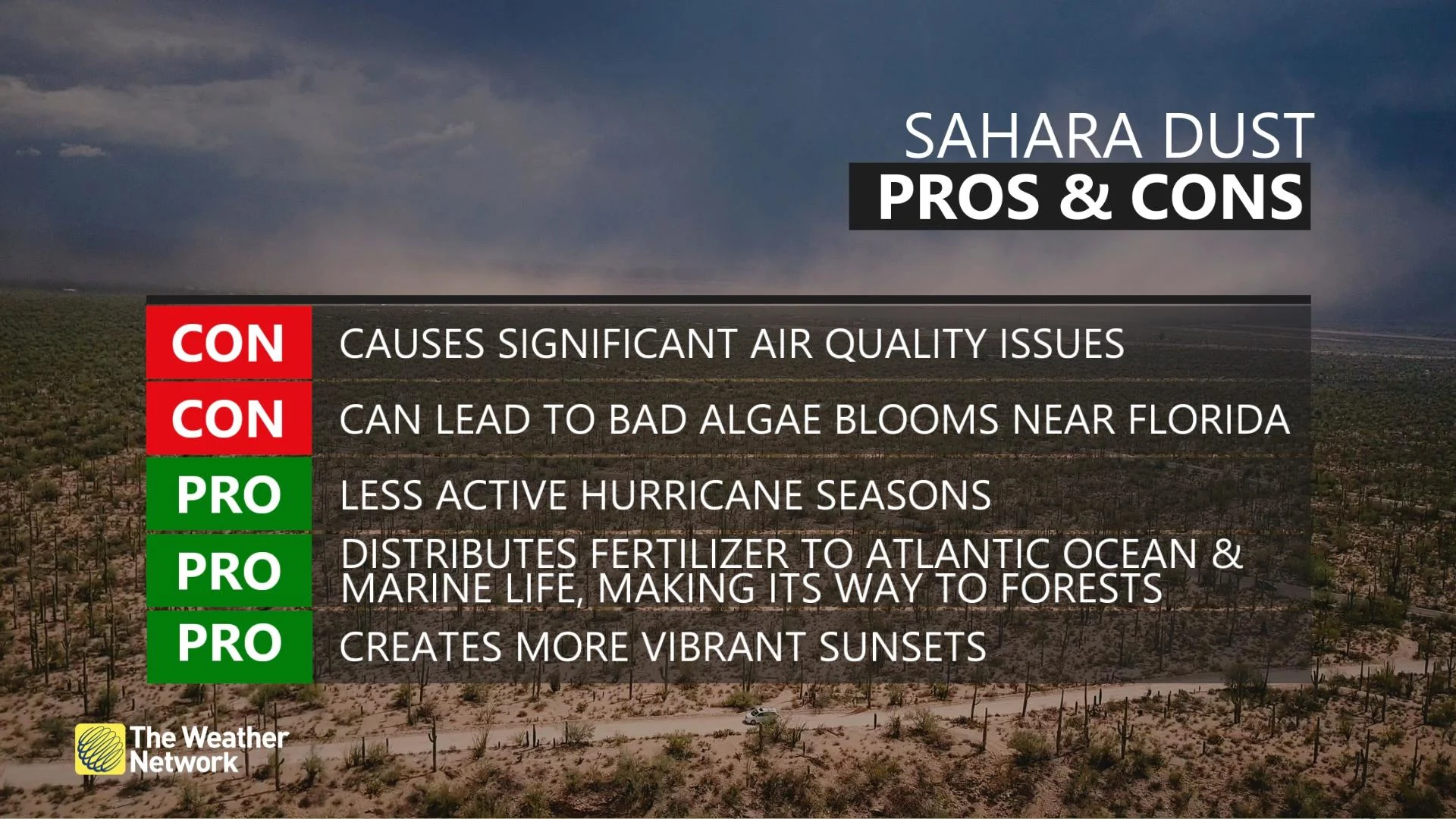
Are more ‘Godzilla’ dust storms on the horizon?
The memorable dust event in 2020 caused air quality degradation as far away as Kansas, while turning sunsets a fiery red across North America.
Remember the massive plume of Saharan dust that spread across the Atlantic Ocean in June 2020? It was known as the 'Godzilla' dust storm and the largest dust storm event in recent history, fuelled by a subtropical high to the north and a potent easterly, African jet stream.
This memorable dust event caused air quality degradation as far away as Kansas, while turning sunsets a fiery red across North America — leaving apocalyptic skies and scenes across the Caribbean stuck in a perpetual sepia filter.
The Saharan Air Layer (SAL) — the hot and dusty atmospheric layer originating from the Sahara Desert — frequently crosses the Atlantic Ocean. Recent research highlighted by the climate team at NASA identified models that show a warming planet could be the harbinger of less Saharan dust transported across the atmosphere.
The Sahara Desert is the juggernaut of deserts. A geographic size that's 9.2 million square kilometres, slightly smaller than Canada, with a population smaller than the Vancouver area — making it one of the least dense regions on the planet.

The complexity and interconnectedness of the Earth's biosphere become apparent when you look at the factors that go into Saharan dust production. This dust even acts as vital fertilizer for the Amazon rainforest, thousands of kilometres away.
It comes down to this.
To get dust lofted into the atmosphere, you need winds and a dry environment. As sea surface temperatures rise across the North Atlantic Ocean, you are left with a more muted temperature gradient when compared with the South Atlantic counterpart.
In theory, weaker trade winds and less dust will be the result because the easterly trade winds currently act as the perfect conduit to transport millions of tonnes of dust per year across the Atlantic Ocean.
The weaker trade winds could shift a band of tropical rainfall north, known as the Intertropical Convergence Zone. Consequently, the rain acts as a natural dust suppressor.

If you're sensing a feedback loop here, you’re on the right track. Less dust means more solar energy reaching the oceans, which in turn would initiate more warming. The NASA team ran sophisticated climate models that highlighted at least a 30 per cent reduction in Saharan dust activity over the next 20-50 years.
A decline in the dust isn't necessarily all bad news. Although the sunsets might be noticeably less vibrant, the air quality improvement across parts of the Caribbean and the U.S. would be welcomed by those who experience asthma.

It's disconcerting how active the 2020 Atlantic hurricane season was, even with such prolific dust intrusions, surprising some researchers. The current scientific consensus is that a dry, dusty environment is extremely hostile to the formation of hurricanes. As a result, the dust is able to scatter sunlight away from the surface, cooling sea surface temperatures.
Even though the overall amount of dust is forecast to decline, other research highlights a wobblier jet stream may trigger more ‘Godzilla’ dust events in the future.
This possible symptom of anthropogenic climate change might mean more extreme bursts of dust activity in the future, similar to the cold intrusions experienced when the polar vortex gets dislodged from the highest latitudes.
Thumbnail credit: NASA












